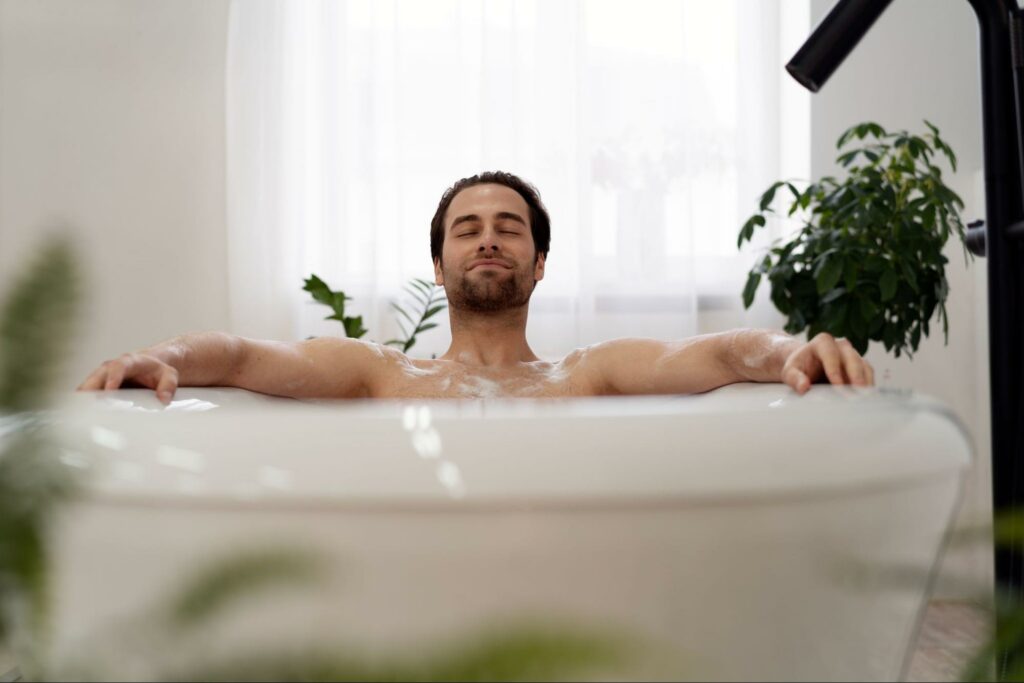Cold water immersion is gaining popularity for its physical healing, mental clarity and general health benefits. These reactions are mediated by circulation, inflammatory processes that will also lead to decreased muscle pain, as well as an increased resistance to psychological stress due to the warming and cooling thereof. While this practice has been in use for centuries, modern science continues to prove its value. Knowing how the body responds to cold water and how to enter the water safely can help you to do so more comfortably and effectively.
The Science Behind Cold Baths and How They Affect the Body
Cold baths trigger physiological responses that affect circulation, metabolism and the nervous system. When you put your body in cold water, your blood vessels constrict. This closes off blood flow to your extremities and sends your blood rushing to your core organs to preserve your core temp. When you warm up, your blood vessels dilate and circulation returns and your muscles recover.
Cold also releases norepinephrine, a hormone that regulates mood and alertness. The response is anti-inflammatory, reduces stress and increases mental resilience. Cold water therapy also activates brown adipose tissue which burns energy to generate heat. This can improve metabolic health and give you more control over your temperature in the long run.
Your nervous system gets used to various stressors with repeated exposure and stress tolerance increases. This is why cold bathers who take regular cold baths say they feel more alert and energized. It’s why cold baths have been revered for centuries.
How to Safely Incorporate Cold Baths into Your Routine
Adding cold baths slowly enables the body to adapt without inducing maximum discomfort.

Slowly adding showers and then gradually moving on to full immersion reduces the initial shock. Restricting early sessions to a few minutes and focusing on breathing prevents an overreaction. People with circulatory ailments or other health conditions should first consult a doctor.
The ideal water temperature is needed to achieve the best from cold baths. Instead of adding ice all the time, most people prefer Warrior Willpower ice chillers that keep the water at a consistent cold temperature without fluctuation. The machines eliminate the hassle of melting ice and provide a consistent, controlled cooling effect.
They also use thermometers, insulated baths, or cold pumps to control temperature, but an even ice chiller will maintain the bath at the necessary level for every treatment. Cold therapy becomes more efficient and convenient with the proper equipment.
Safety advice for cold bathing:
- Start with slow acclimatization with cold water cleansing before immersion.
- Monitor the water temperature through a thermometer in order not to expose excessively to cold.
- Use an ice bath or insulated container to maintain an even temperature of coldness.
- Keep the first sessions brief, starting at one or two minutes.
- Focus on slow and controlled breathing to reduce the shock response.
- Allow the body to acclimatize naturally and not too quickly.
Key Health Benefits of Cold Water Immersion
Cold water immersion has been linked to several health benefits and has become a popular recovery and wellness treatment. The rapid temperature change stimulates physiological reactions that improve circulation, muscle activity, and mental acuity.
Benefits of cold water immersion:
- Reduces muscle soreness – Cold therapy reduces inflammation and speeds up recovery post exercise.
- Improves circulation – Blood vessels constrict with cold then dilate when you warm up which improves circulation.
- Boosts metabolism – Cold showers activate brown fat which burns energy to generate heat.
- Increases mental toughness – Chronic cold exposure hardens the nervous system to stress.
- Boosts immune system – Taking a cold bath has been shown to boost the immune system by stimulating white blood cells.
- More alert – Cold water shock releases norepinephrine which increases focus and energy.
- Can lead to better sleep – Cold exposure lowers your core body temperature and your body gets the signal to sleep.
Common Myths and Misconceptions About Cold Baths
Cold baths have gained popularity because of their benefits, but there are several myths that continue to confuse people. Some believe they are reserved for professional athletes alone, while others are intimidated by the risks involved without understanding the science of cold water immersion.

Debunking these myths allows more people to approach cold water immersion with confidence.
Myths regarding cold baths:
- Cold baths are dangerous for the immune system – Cold exposure doesn’t predispose the body to disease. Actually, some studies show that precisely controlled cold exposure could boost immune function by stimulating white blood cell activity.
- Cold water immersion alone benefits professional athletes – While athletes use cold baths for recovery, the rest of us can experience the benefits of improved circulation, reduced stress, and increased energy.
- The longer exposure will be of greater benefit – Long exposure to cold water is damaging. Exposures of few minutes are beneficial with no additional stress on the body.
- Cold baths always induce hypothermia – Cold immersion is safe provided it is conducted properly. Hypothermia poses a threat only when long exposure is in very low temperatures.
Conclusion
Cold baths possess numerous physical and mental benefits, ranging from improved circulation to increased tolerance to stress. Knowledge of the science behind them, compliance with safe immersion practices, and dispelling myths can make it even healthier. Gradual acclimation, temperature management, and controlled breathing optimize benefit with minimal pain. For recovery or general wellness, incorporating cold baths into a regimen can be a healthy habit when done safely.

